Picking up where I left off last week, I write now to present examples of limp vellum bindings held in Gleeson Library’s Rare Book Room. I met with John Hawk, Head of Special Collections, to see examples of four types of bindings: coptic binding, limp vellum binding, flat back hard case binding, and classic rounded back binding, and it made me happier than a kid in a candy shop.
Technically vellum is made from calf skin, but the term can be interchangeable with parchment, which is technically made from sheep or goat skin. Limp vellum binding is called limp because the textblock is bound in a limp material rather than a hardback cover–traditionally it is vellum, but can also be parchment and even paper–and the textblock is laced into the limp cover in a way that is removable. Historically this was done to make it easier to replace covers of highly used books (think prayer books and reference works that are carried around and consulted often), and it also reduces the bookbinder’s cost. You can think of it sort of like paper bag book covers for textbooks (remember doing that in middle school and high school?). You can read more about limp vellum/parchment/paper binding on my blog.
Love is enough, or, The freeing of Pharamond : a morality. Written by William Morris, illustrations designed by Edward Burne-Jones, engraved on wood by W.H. Hooper.
This late 19th century item was probably bound in limp vellum to reflect an aesthetic choice rather than a binding necessity, as the green ribbons used to tie in the textblock are a fashion statement rather than a requisite to the function of the form. Traditionally, limp vellum binding also utilizes endbands, and the thongs or other material the endbands are sewn around extend from the spine, offering two more locations to tie the textblock to the cover, but this specimen lacks that feature.

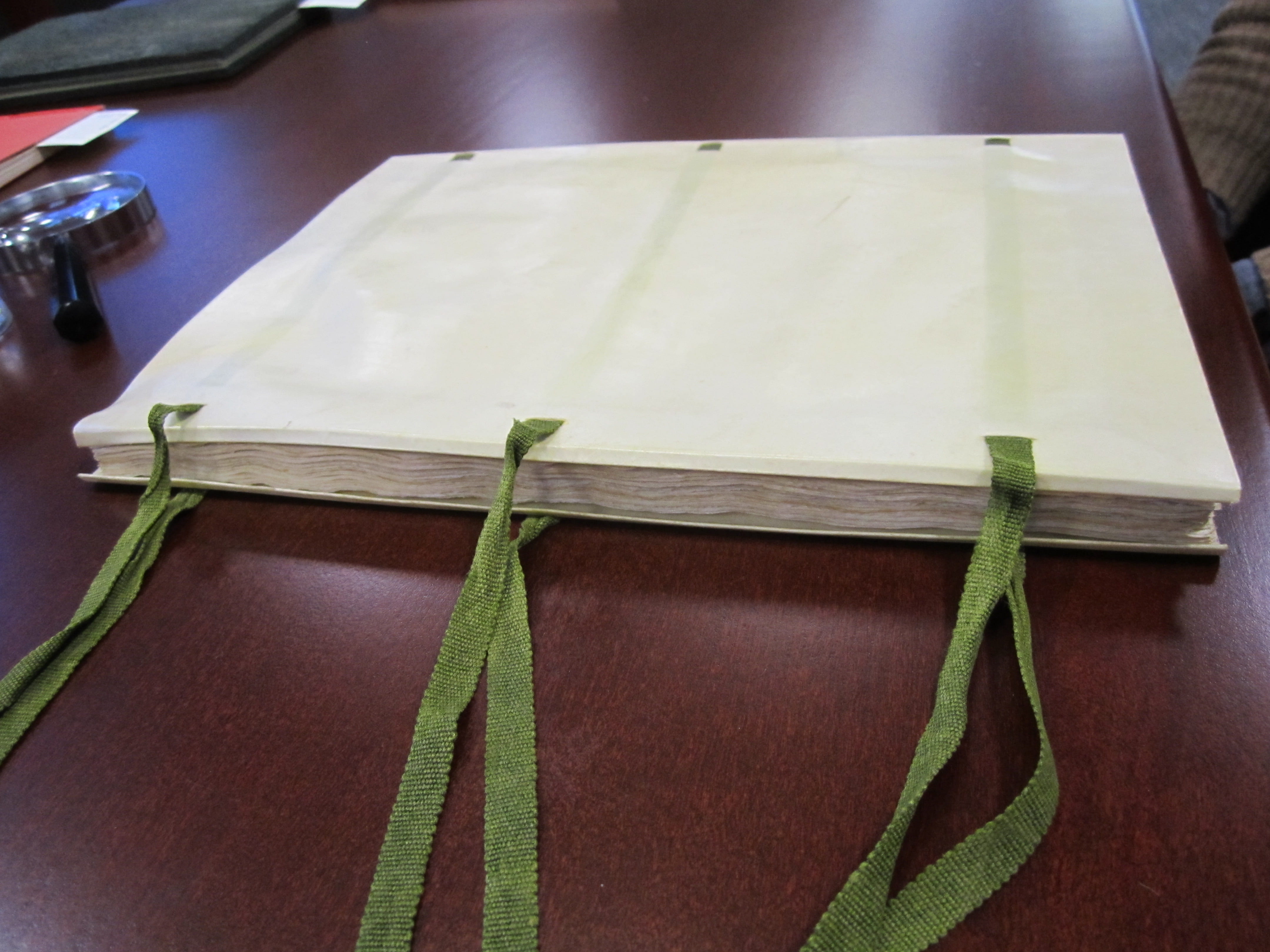
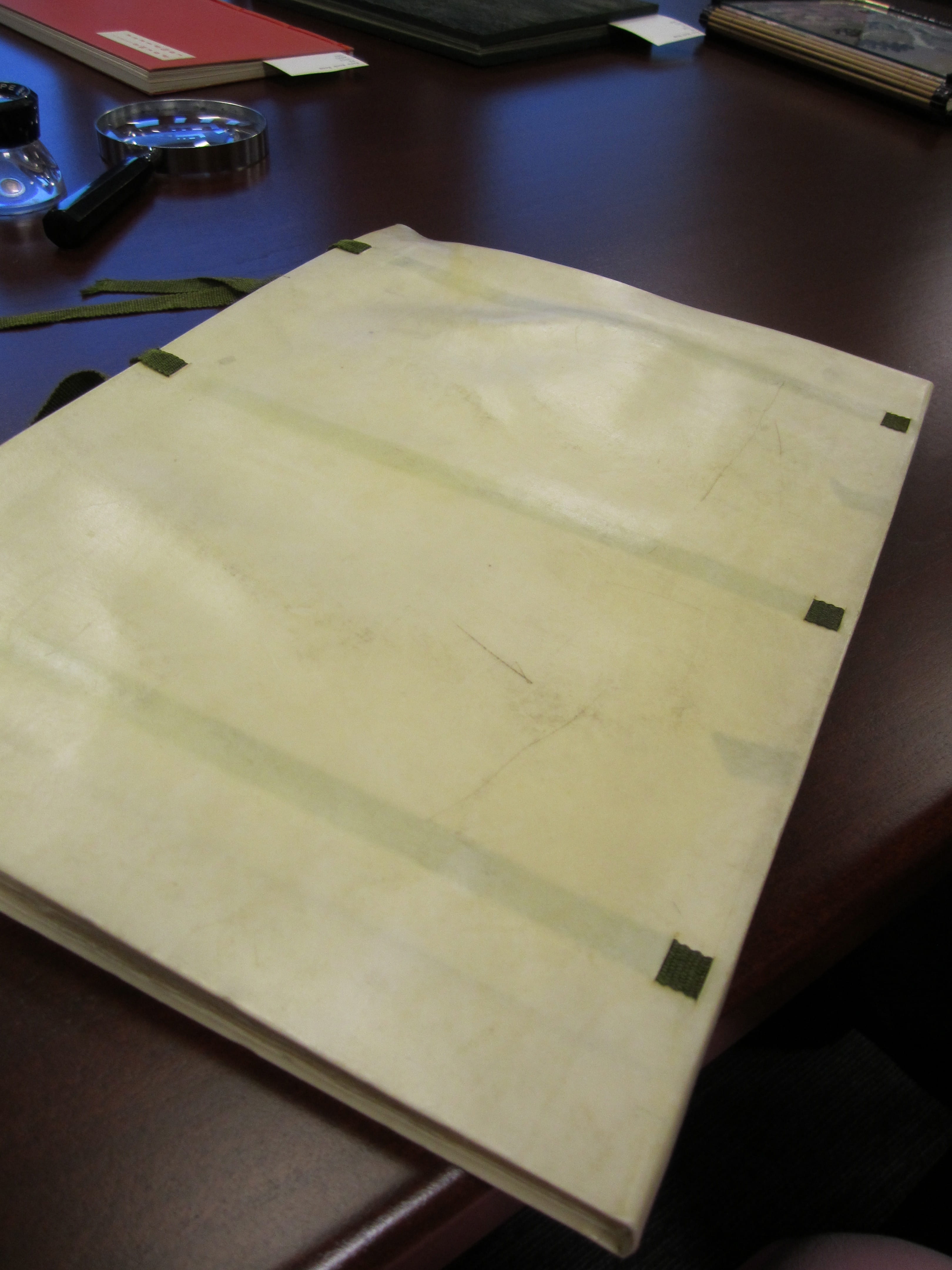
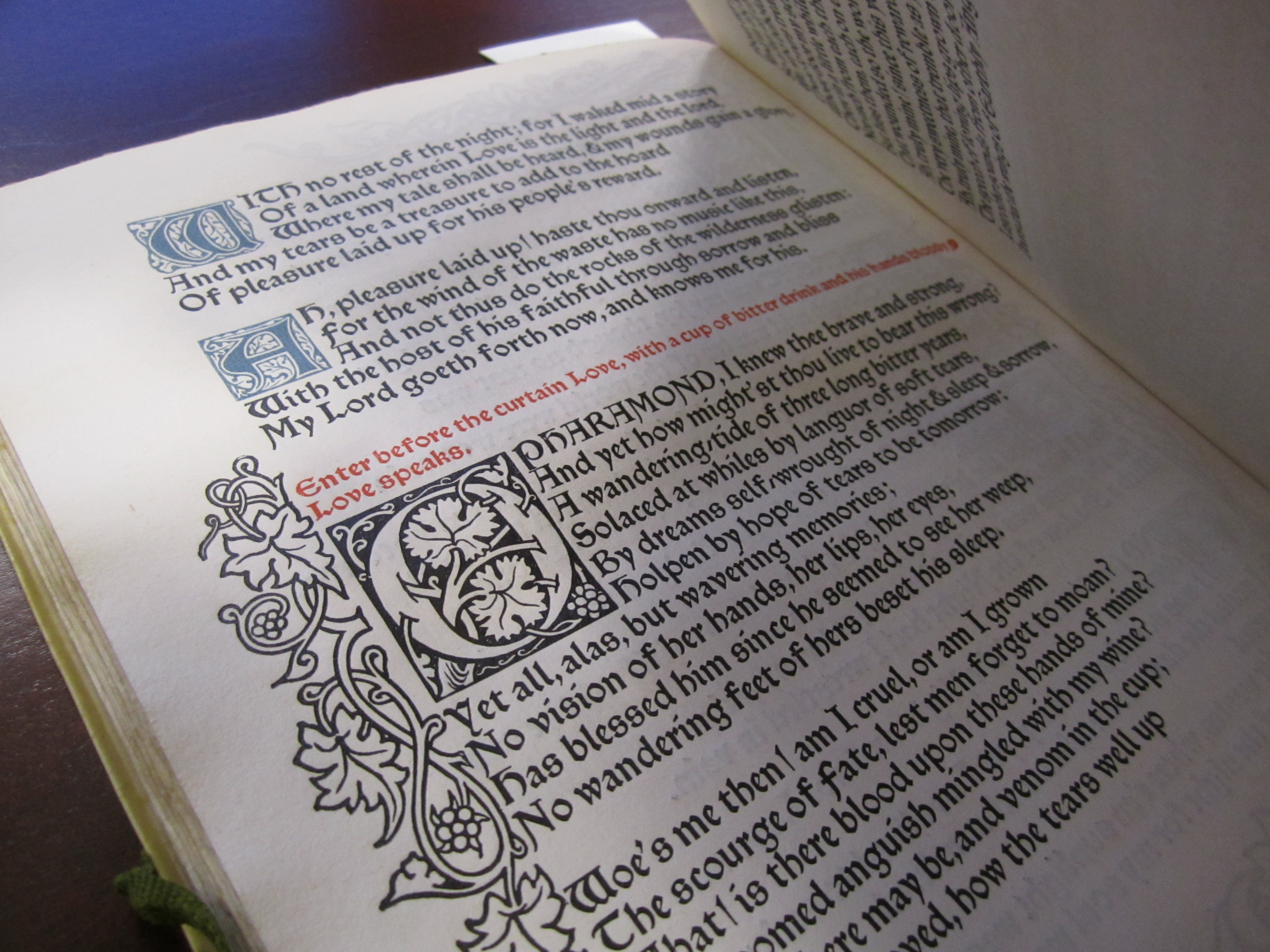
I encourage you to take a look at this item in the Rare Book Room (call number PR5078 .L5 1897), or you can read the text in our older (1873) yet less specially bound circulating copy (Stacks PR5078 .L5).
You can’t choose your progeny. By Rollin Milroy, bound by Claudia Cohen. Copy 6 of 23, includes an original vellum leaf from the 1914 Doves Press edition of the poems of Percy Bysshe Shelley.
Ok… disclaimer. I am not authoritatively able to say this is really a limp vellum binding, but I want to include it anyway. First of all, it is covered in what appears to be hand made cave paper, not vellum, but like in the workshop I attended, binding with vellum can be prohibitively expensive. Secondly, it appears that at least part of its form relies on lacing in the sewing station tapes to the cover, but I cannot tell if the textblock was further attached in another way. And for special mention, it includes one sheet of vellum bound within the luxuriously thick paper that constitutes its textblock.
This demonstrates how binding techniques evolve over time and inform each other: this contemporary book (2008) incorporates routine tradition to fit the nature of the materials at hand.
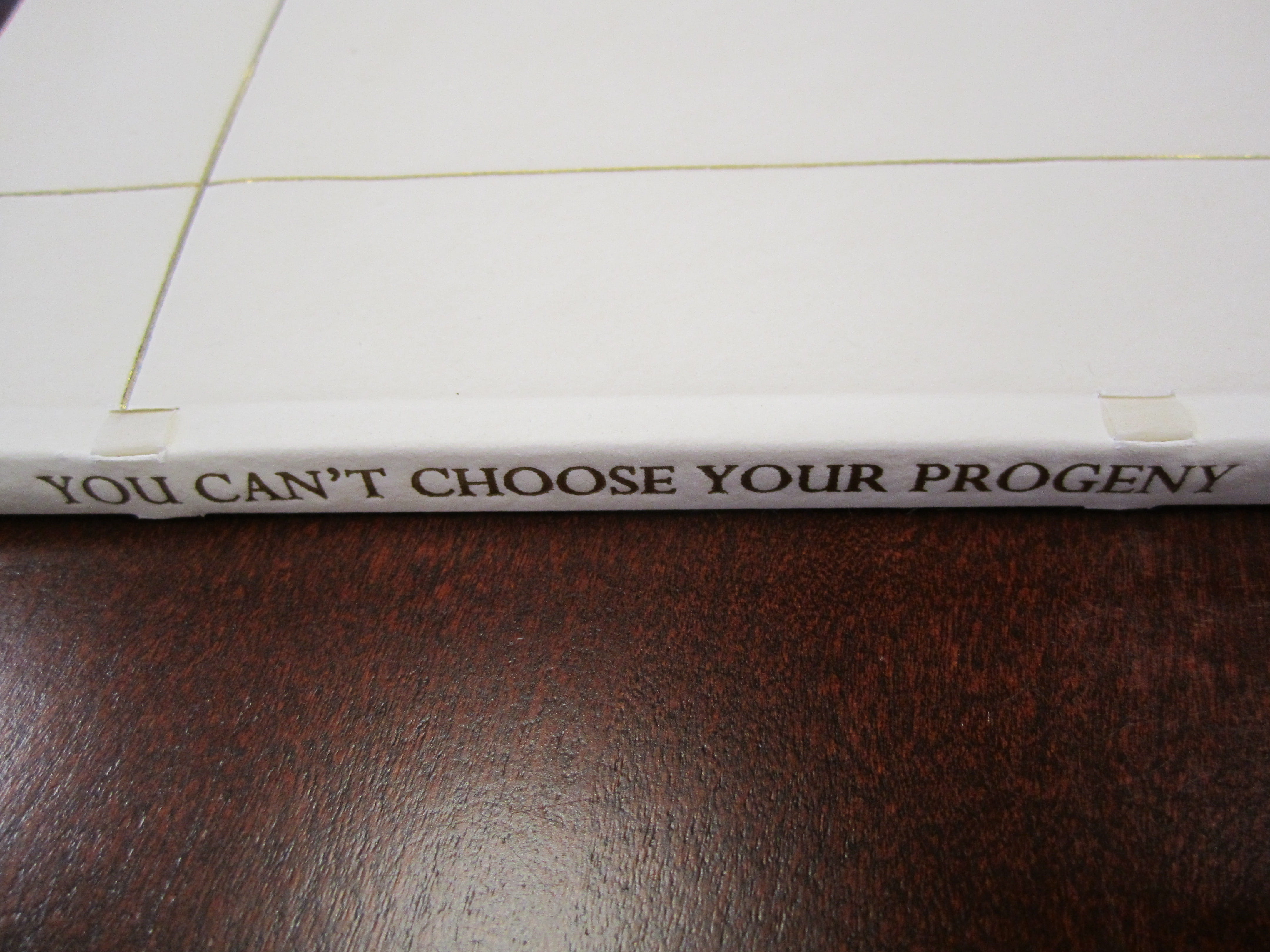
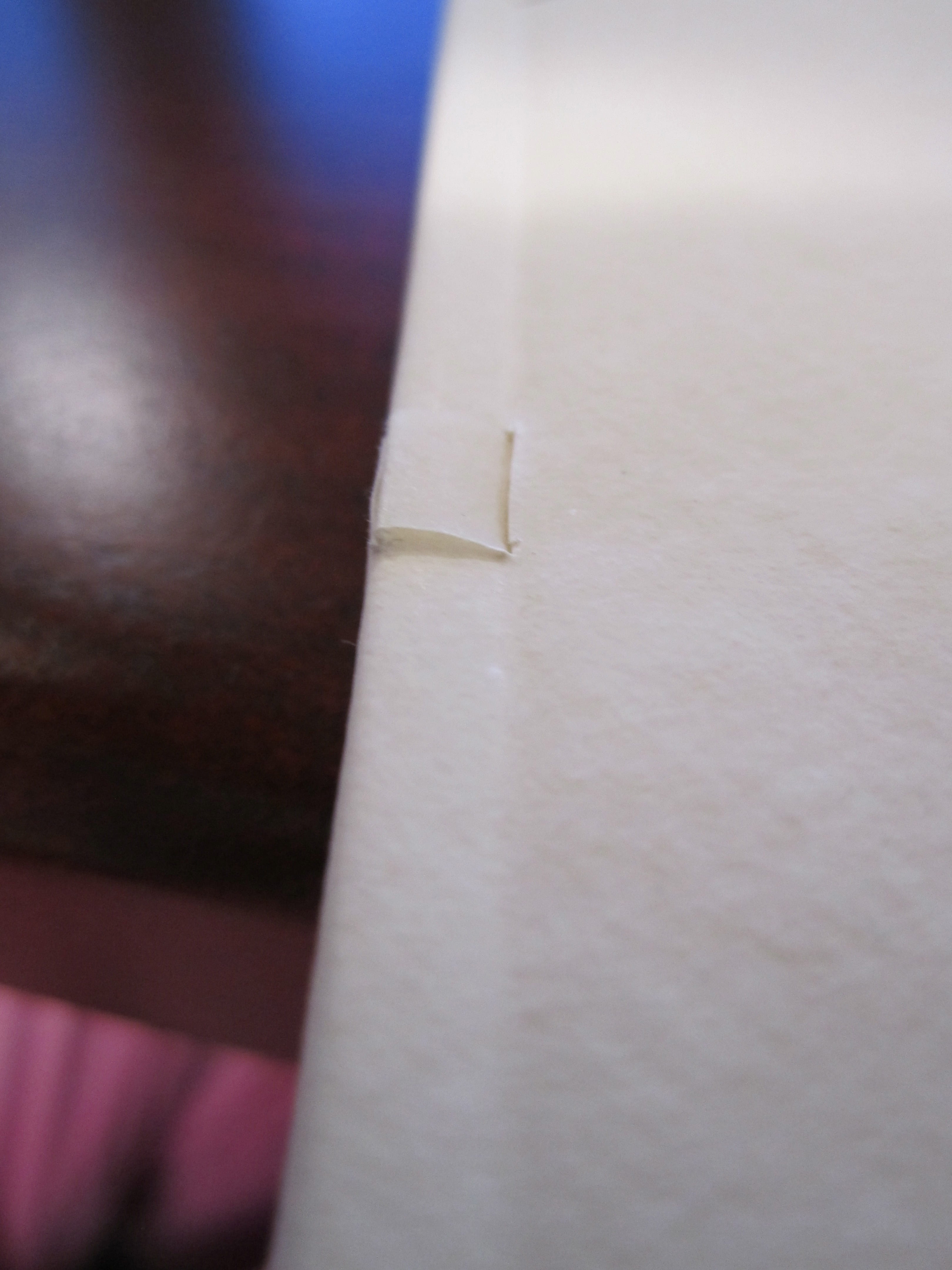
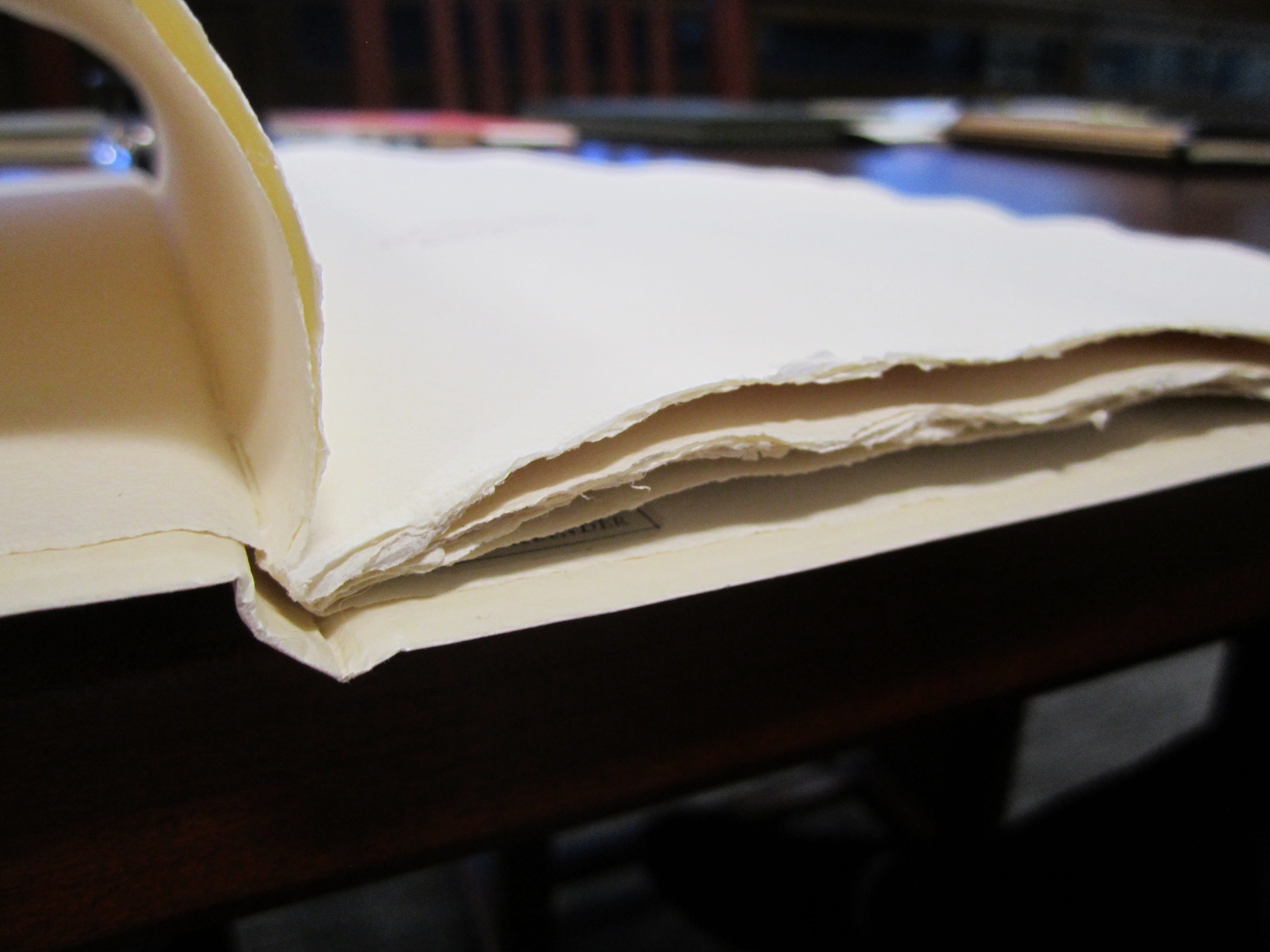
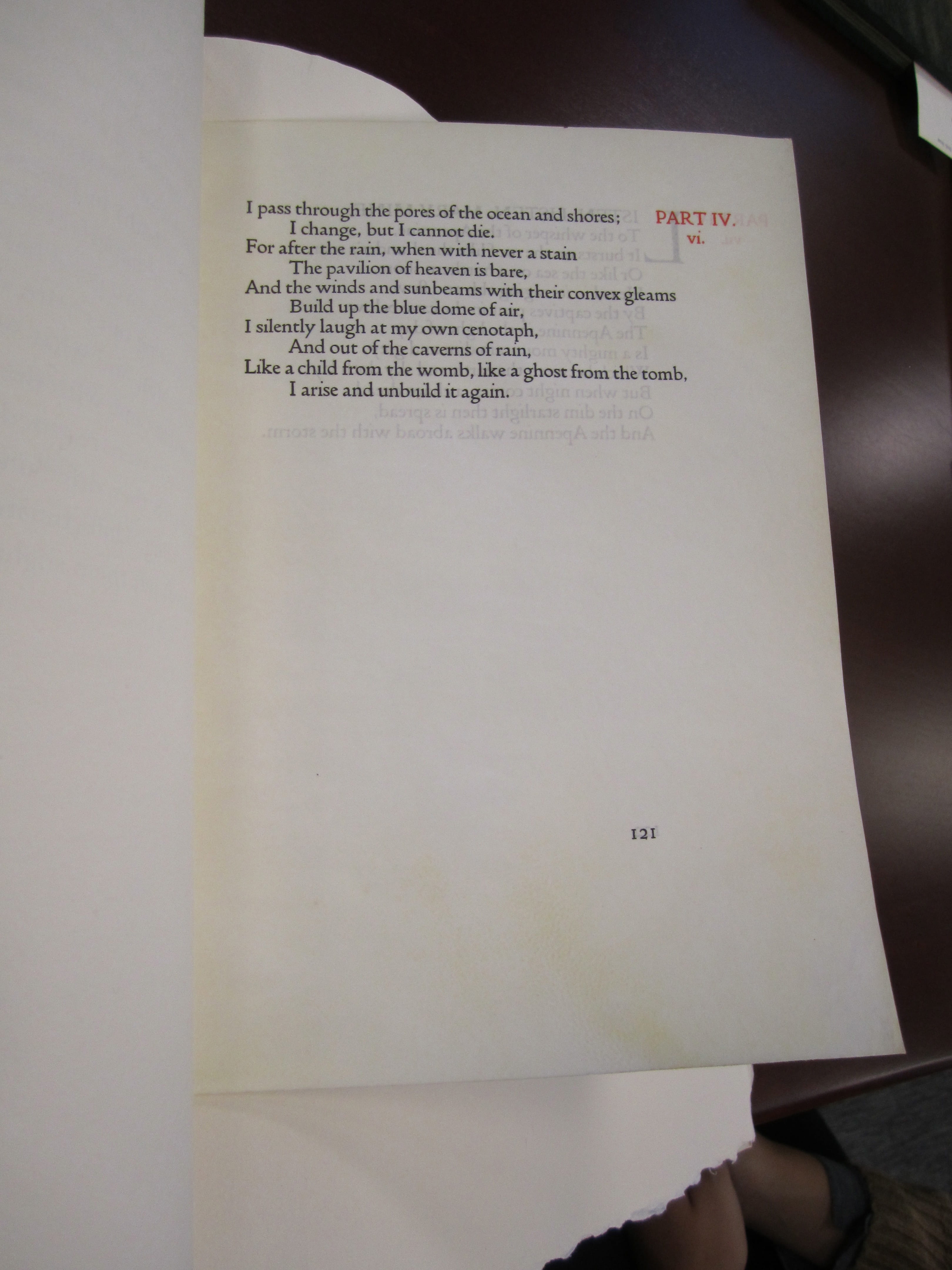
I hope you have learned something fun from this post and it inspires you to visit John in the Rare Book Room, which is open M-F 9 am – 5 pm. See you next week when we’ll talk about flat back hard case binding!
